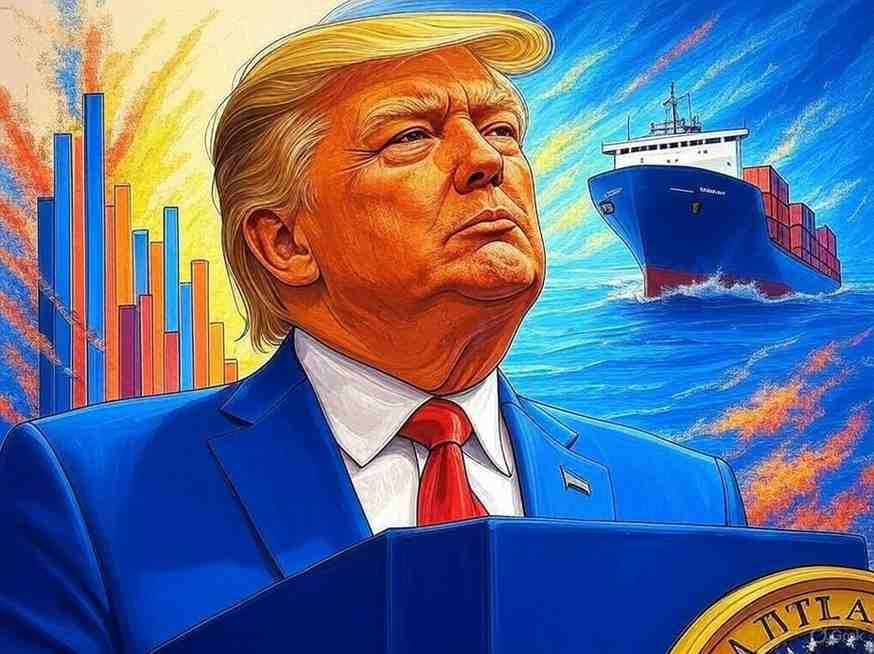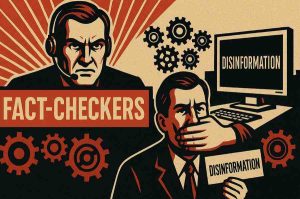Trump’s Tariffs: The Great Reset for the American Economy

The tariff policies introduced under President Donald Trump sparked widespread controversy, especially among globalist economists, multinational corporations, and pro-China trade lobbies. But if we strip away the hysteria and examine the broader implications, these tariffs can be interpreted not as a blunder, but as a calculated “great reset”—a bold move to realign the American economy with national interests, industrial sovereignty, and long-term resilience.
Far from merely a short-term trade tactic, the Trump tariffs laid the groundwork for a revitalized industrial base, job creation at home, and reduced reliance on hostile foreign powers. Critics pointing to market jitters or temporary cost hikes ignore the more profound transformation underway: a shift from speculative globalization to productive nationalism.
Rethinking the Globalist Model
For decades, American policymakers embraced a doctrine of free trade that hollowed out domestic industry while enriching multinational corporations and adversarial nations. The Clinton-era normalization of trade with China catalyzed this decline. According to the Economic Policy Institute, the U.S. lost 3.7 million jobs to China between 2001 and 2018 (The China Toll, Scott).
This “China Shock,” as dubbed by economists David Autor and Gordon Hanson, devastated industrial heartlands, fueled income inequality, and eroded America’s productive capacity (The China Shock, Autor et al.). Trump’s tariffs directly targeted this imbalance, placing duties on steel, aluminum, and Chinese goods to create a more level playing field.
A Strategic Reset: Restoring Manufacturing
Supporters of globalization dismissed America’s manufacturing losses as the inevitable result of progress. But the pandemic exposed the fragility of this offshored model. Critical supplies like masks, ventilators, and microchips were suddenly inaccessible. The Trump tariffs anticipated this vulnerability, incentivizing companies to return operations to U.S. soil.
In fact, reshoring has gained significant traction. According to the Reshoring Initiative, 2021 saw over 260,000 manufacturing jobs brought back to the U.S.—a record high (Reshoring Initiative 2021 Data Report, Moser). Tariffs were instrumental in this shift, offering predictability and protection to firms willing to reinvest domestically.
The aluminum industry is a key example. After Trump imposed tariffs on aluminum imports, U.S. production increased and idled plants restarted. The Aluminum Association reported that domestic production of primary aluminum rose by over 60% between 2017 and 2020 (Economic Impact of the U.S. Aluminum Industry, Aluminum Association).
Employment, Wages, and Industrial Strength
Job creation is perhaps the most overlooked success of the Trump tariffs. By reintroducing competition in favor of American producers, tariffs helped stabilize employment in key sectors. The manufacturing wage premium—the difference in pay between manufacturing and service jobs—re-emerged as domestic demand strengthened.
Moreover, research suggests that the tariffs’ impact on consumer prices was less than anticipated. According to a report by the Coalition for a Prosperous America, tariffs on Chinese goods had a negligible effect on inflation while generating $74 billion in additional government revenue (Tariffs Did Not Raise Prices, Shelton).
This revenue, unlike income taxes or inflationary borrowing, does not burden the middle class. In effect, tariffs act as a user fee for access to the American market—a market built by American taxpayers and workers.
Cutting Costs, Not Raising Them
Mainstream economists often argue that tariffs raise prices and hurt consumers. But this simplistic view omits key context. Yes, some imported goods became more expensive. But the tariffs also forced importers to find cheaper alternatives or to manufacture domestically.
More importantly, the long-term costs of not having a domestic industrial base are far greater. Depending on adversarial nations for steel, energy technologies, and pharmaceuticals is not only economically risky—it’s a threat to national security. As Trump repeatedly stated, “If you don’t have steel, you don’t have a country.”
Addressing Trade Deficits and Currency Manipulation
The Trump administration also used tariffs to address trade imbalances—especially with China, which had long manipulated its currency and used non-tariff barriers to dominate global markets. By 2018, the U.S. trade deficit in goods with China had ballooned to $419 billion (U.S. Census Bureau).
Tariffs served as leverage in negotiations, culminating in the U.S.-China Phase One deal, which included commitments from China to increase purchases of American goods and services (U.S.-China Economic and Trade Agreement, USTR). Though enforcement was imperfect, the deal marked a shift in tone and expectations.
Markets React, But Do Not Dictate
Critics often pointed to stock market dips following tariff announcements. But short-term market reactions are not synonymous with economic health. Stocks often fall on uncertainty, not on substance. As noted by economist Michael Pettis, “markets dislike change, even change for the better” (Avoiding the Middle-Income Trap, Pettis).
The markets’ initial fear of tariffs did not prevent U.S. unemployment from falling to record lows before COVID-19. Nor did it stop GDP growth from accelerating in key quarters. The tariffs disrupted the status quo but laid the foundation for a more balanced and sustainable economy.
Reclaiming Economic Sovereignty
Tariffs, unlike income taxes, are also an expression of sovereignty. By taxing foreign products rather than domestic labor, the U.S. regains control over its fiscal base. Moreover, tariffs incentivize companies to produce in jurisdictions with higher labor and environmental standards—making global trade more ethical and aligned with national values.
They are also tools for fighting tax evasion. A 2012 study by economist James Henry estimated that over $21 trillion in private wealth was hidden in offshore tax havens (The Price of Offshore Revisited, Henry). Tariffs ensure that foreign producers and multinational corporations contribute to the public good when accessing American consumers.
Not Isolationism, But Selective Engagement
Critics claim tariffs represent protectionism or economic nationalism. But what Trump proposed was not autarky, but reciprocal trade. As he famously declared: “Free trade is great, but only if it’s fair.”
The U.S. has long accepted lopsided trade deals under the guise of international cooperation. But such cooperation has often served the interests of global institutions and foreign governments, not American workers. Trump’s tariffs aimed to rebalance this dynamic and restore dignity to labor and production.
A Foundation for the Future
With the rise of AI, automation, and decentralized manufacturing, the logic of local production is only growing stronger. Trump’s tariffs, in hindsight, may be viewed as the first step in a broader shift toward economic realism.
Even as the Biden administration has kept many Trump-era tariffs intact, it is clear that a new consensus is forming: national security, industrial strength, and economic independence matter.
Conclusion: Not Just Policy, But Paradigm Shift
The Trump tariffs were not a one-off policy, but a declaration of intent—a refusal to continue down the road of deindustrialization, dependence, and decline. They signaled that the American economy must serve the American people first.
Yes, there were disruptions. Yes, there was pushback from entrenched interests. But as with any true reset, discomfort was the price of transformation.
Trump’s tariffs, properly understood, were the opening salvo in a longer war to reclaim sovereignty, rebuild industry, and re-center the economy around production rather than speculation. As history has often shown, those who control their supply chains control their future. The tariffs were a first step in taking that control back.
Sources referenced:
- The China Toll, Robert Scott (Economic Policy Institute)
- The China Shock, David Autor, David Dorn, and Gordon Hanson
- Reshoring Initiative 2021 Data Report, Harry Moser
- Economic Impact of the U.S. Aluminum Industry, Aluminum Association
- Tariffs Did Not Raise Prices, Jeff Ferry (Coalition for a Prosperous America)
- Avoiding the Middle-Income Trap, Michael Pettis
- The Price of Offshore Revisited, James Henry
- U.S.-China Economic and Trade Agreement, United States Trade Representative (USTR)
- U.S. Trade Deficit Data, U.S. Census Bureau


















